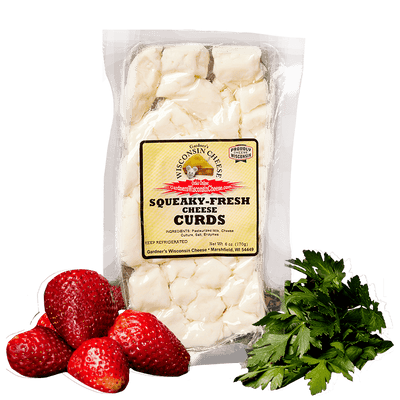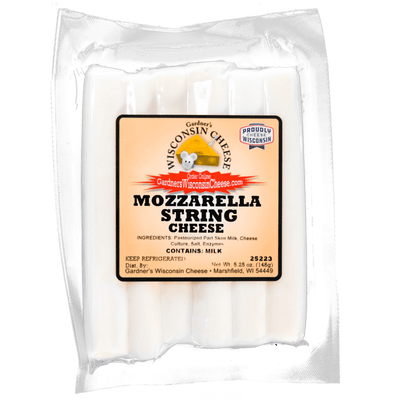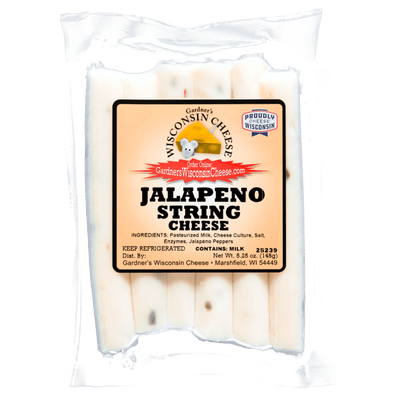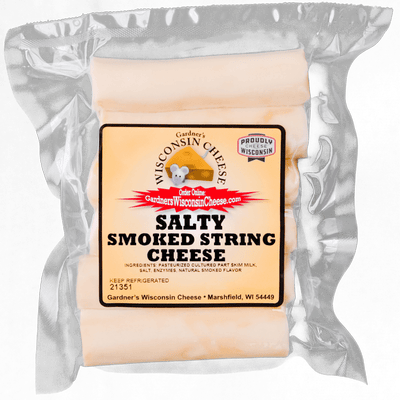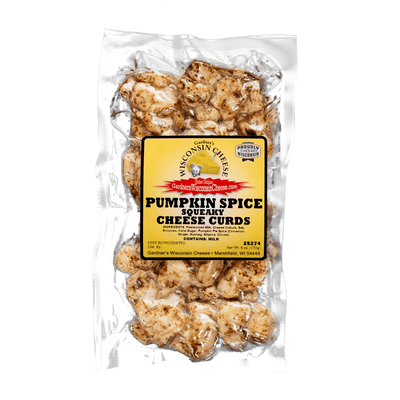
· By Daylon Gardner
Don't Let Your Delicious Cheese Go Bad! Master the Art of Perfect Storage Today
Alright, cheese lovers, gather 'round! Have you ever reached for that glorious wedge of Gouda, only to find it looking a little… sad? Maybe a bit dry, a tad slimy, or worse, sporting an unwelcome fuzzy friend? Oh, the horror! But fear not, because today we're turning those cheese-related frowns upside down! You're about to become a bona fide cheese storage guru, ensuring every single bite of your beloved dairy is as magnificent as the day you brought it home. Prepare to unlock the secrets to perfect cheese preservation.
Why Proper Cheese Storage is Your New Superpower (And Your Cheese's Best Friend)

Think about it: you invested in some of our delicious, artisan cheeses. Heck, maybe you even subscribed to one of our boxes and want to protect your monthly investment! Don't you want to savor every single ounce of its flavor, its texture, its pure cheesy joy? Of course, you do! Proper cheese storage isn't just a chore; it's an act of love, a dedication to deliciousness. It’s your secret weapon against waste and your direct ticket to continued culinary bliss. You're not just storing cheese; you're preserving happiness!
The Enemy of Good Cheese: What Ruins Flavor and Texture?
So, what's lurking in the shadows, waiting to sabotage your tasty treasures? Primarily, we're talking about a mischievous trio:
-
Air Exposure: This is the big bad wolf, leading to dreaded dryness and a loss of those delicate aromas. Oxygen is great for breathing, not so much for exposed cheese!
-
Excessive Moisture: Too much humidity can create a breeding ground for mold (the bad kind!) and lead to a slimy, unappetizing exterior. Nobody wants a slip-and-slide cheese!
-
Temperature Extremes: Too warm, and your cheese sweats and spoils. Too cold (like a regular fridge setting without protection), and it dries out, its flavors muted and its texture like rubber. We're looking for the Goldilocks zone here!
Understanding these foes is the first step to becoming an invincible cheese protector. You've got this!
The Golden Rules of Glorious Cheese Storage: Your Ultimate Cheat Sheet
Ready to lay down the law for your cheese? These four golden rules are your foundation for impeccable preservation.
Rule #1: Embrace the Breathable Barrier (Say NO to Plastic Wrap!)
This might be the most crucial rule, so listen up! Your cheese needs to breathe. Yes, really! It's a living, evolving thing, and suffocating it in plastic wrap is like putting a plastic bag over your head. Plastic traps moisture, leading to mold growth, and it can impart an unpleasant plasticky taste. Yuck!
Your mantra: Breathable, but protected!
Rule #2: The Temperature Tango: Finding the Sweet Spot

Your refrigerator's main compartment is often a bit too chilly for optimal cheese happiness. We're aiming for a slightly warmer, more stable environment. Think of it as a cool, underground cellar vibe. Usually the crisper drawer or a dedicated cheese drawer is ideal, as it’s generally a few degrees warmer and offers better humidity.
Ideal range: 35°F to 45°F (2°C to 7°C).
Rule #3: The Humidity Hero: Keeping Things Just Right
This goes hand-in-hand with temperature. Too dry, and your cheese cracks and shrivels. Too wet, and you’re inviting unwanted mold. A moderate humidity level is key. You want enough to prevent drying, but not so much that it gets slimy. This is why those crisper drawers are so awesome!
Rule #4: Keep Odors at Bay: No Stinky Situations Here
Cheese, especially the funkier varieties, can be a bit… aromatic. But it also acts like a sponge, readily absorbing other odors in your fridge. Ever had cheese that tastes faintly of last night's onion? We’re avoiding that! Keep strong-smelling cheeses separate or in their own contained environment.
Unmasking the Best Storage Methods: Your Cheese's Spa Treatment
Now for the fun part: picking the perfect outfit for your cheese!
The Wonderful World of Waxed Paper and Cheese Paper

These are your cheese's best friends! Cheese paper (like Formaticum or Fromagex) is specially designed with a porous inner layer to allow breathing and a waxy outer layer to prevent drying. It's truly ingenious! If you don't have cheese paper, parchment paper or waxed paper are excellent alternatives. Just avoid foil or plastic wrap for direct contact.
How to use: Wrap your cheese snugly, ensuring all cut surfaces are covered. You can then put this wrapped cheese into a very lightly sealed container for extra protection against drying and odors.
The Marvelous Magic of Airtight Containers (with a Twist!)
Wait, didn't we just say no to suffocating cheese? Yes! But airtight containers have their place after you’ve properly wrapped your cheese in breathable paper. An airtight container can provide an additional layer of protection against drying out and keeps those potent cheese aromas from mingling with your other fridge inhabitants.
Pro Tip: Add a slightly damp paper towel next to (not touching!) your wrapped cheese in the container to boost humidity, especially for softer cheeses. Change it regularly!
The Genius of Cheese Domes and Boxes
These are not just pretty displays! Traditional cheese domes and wooden cheese boxes often come with a small vent or are designed to allow just enough airflow while maintaining a stable environment. They’re fantastic for larger pieces of cheese you're rotating through quickly. Plus, they look super fancy, don't they?
Can You Freeze Cheese? The Frosty Truth Revealed
Ah, the freezer! The ultimate pause button… but is it good for cheese?
-
Hard and Semi-Hard Cheeses: Yes, with a caveat! Freezing can alter the texture, making it more crumbly. It’s best for cheese you intend to grate or cook with, rather than slicing for a cheese board. Wrap it tightly in multiple layers (cheese paper then foil or a freezer bag) to prevent freezer burn.
-
Soft and Fresh Cheeses: Generally, a big NO! Freezing these will drastically change their delicate texture, making them mealy or watery upon thawing. Best enjoyed fresh!
Decoding Cheese Types: Tailored Storage for Every Delicious Bite
Different cheeses have different needs. Let's tailor their spa treatment!
Soft and Fresh Cheeses (Think Mozzarella, Brie, Chevre)

These delicate beauties are high in moisture and have the shortest shelf life.
-
Storage: Wrap loosely in cheese paper or parchment, then place in a very lightly sealed container or a small bowl covered with a plate.
-
Key: Maintain high humidity to prevent drying, but allow some air circulation to prevent sliminess.
-
Shelf Life: Consume within 5-7 days of opening.
Semi-Hard Cheeses (Hello Cheddar, Gouda, Swiss, Jack!)

Your everyday heroes! These are more forgiving but still appreciate proper care.
-
Storage: Wrap snugly in cheese paper or waxed paper. For extra protection, place the wrapped cheese in a reusable container.
-
Key: Balance between preventing drying and allowing a little breath.
-
Shelf Life: Can last 2-3 weeks, sometimes longer, if stored well.
Hard Cheeses (Aged Cheddar and Parmesan entered the party)

These robust cheeses are built to last!
-
Storage: Wrap in cheese paper or parchment. They can tolerate slightly less humidity. For a really large wedge, you might even consider wrapping it in a clean, damp cloth (changed daily) for extra protection, then placing it in a container.
-
Key: Prevent them from drying out and becoming rock-hard.
-
Shelf Life: Weeks, even months for whole blocks, if stored properly.
When left unopened, our aged cheddar cheeses will last FOREVER in the fridge!
Blue Cheeses (The Bold and the Beautiful)

These pungent powerhouses need special attention due to their unique molds.
-
Storage: Wrap tightly in new cheese paper or foil. Blues are notorious for spreading their distinct aromas, so consider an extra layer of protection like a dedicated airtight container.
-
Key: Keep them separate to prevent their mold from migrating and their aroma from contaminating other foods.
-
Shelf Life: 1-2 weeks once cut.
Reviving Your Cheese: When All Else Fails (Almost!)
Accidentally let a little piece get too dry? Don't despair immediately!
-
Dry Edges: If it's just a tiny bit, you can often trim off the dry, hardened edge.
-
Hard Cheese Revival: For hard cheeses, a quick "cheese bath" can work wonders. Wrap the dried piece in a clean, slightly damp paper towel for an hour or two in the fridge. This can reintroduce some moisture and soften it up.
-
Surface Mold: For hard and semi-hard cheeses, if you see a small spot of surface mold (that isn't part of a blue cheese!), you can often cut at least an inch around and below the mold. Just make sure the rest of the cheese smells and looks perfectly fine. If it's soft cheese or the mold is extensive, it's best to err on the side of caution and discard it. When in doubt, throw it out!
Your Cheese Storage Journey Starts NOW

See? You're already a pro! With these simple yet powerful tips, you're not just storing cheese; you're elevating your entire cheese experience. No more sad, dried-out remnants! Go forth, arm yourself with cheese paper and confidence, and keep every delicious bite as fresh, flavorful, and fabulous as it was meant to be. Your taste buds (and your wallet!) will thank you. Happy cheesing!

